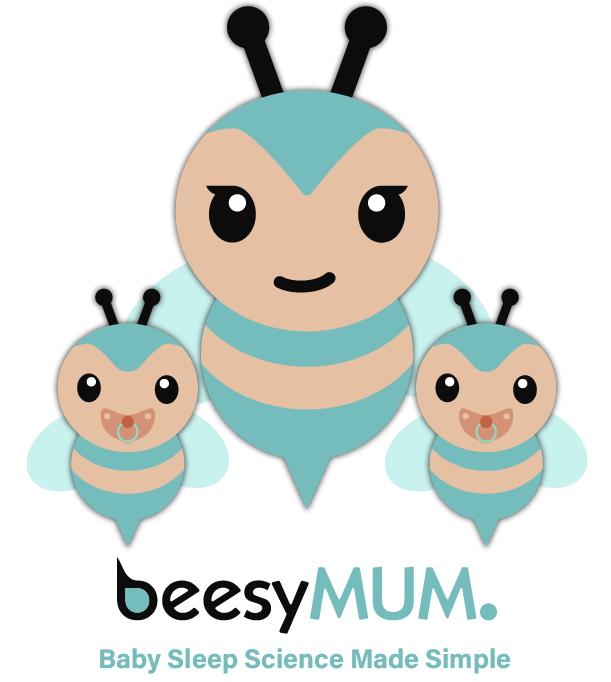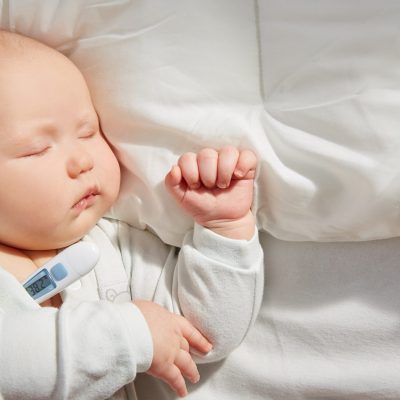Fever in babies is terrifying for parents. But not every time it is something serious. It is a reaction of the body and it indicates the fact that the body fights against germs, viruses or infections. Below you will find information on how to treat fever.
What is the normal temperature for a baby?
A normal temperature has an approximate value of 37°C when it is measured orally (placing the thermometer in the baby’s mouth) and 37.5 ° C when you take the rectal temperature (placing the thermometer in the baby’s rectum). Many doctors say that the fever appears when the oral temperature is above 37.5 ° C or when the rectal temperature is above 38 ° C.
How should I take my baby’s temperature?
You can obtain an exact value of the temperature if you take the rectal temperature if the baby is 3 months old or smaller. But for older babies, it is recommended to take the oral temperature, except cases where the paediatrician suggests otherwise. Use a digital thermometer. Do not use a mercury thermometer. Mercury is toxic and you do not want to risk your family’s health.
Here are the steps you need to take in order to obtain an accurate value of your baby’s temperature:
– make sure that the rectal thermometer is distinctively marked so that you can eliminate the possibility of accidentally use it orally
– before taking the temperature clean the thermometer with warm water and soap and rinse it thoroughly with cold water. If you take the oral temperature, wait at least 20 minutes after he has eaten or drunk hot or cold fluids and after that, you can place the thermometer.
– do not shake it or play with it before taking the temperature.
– do not take the temperature right after a bath.
– do not leave the baby alone while taking the temperature with a thermometer.
-after using the thermometer and you have finished using it, clean it with alcohol or wash it with cold water and soap.

Ways to check if your baby or child has a fever
The traditional way of taking the temperature
Mothers use mostly the traditional way, that of touching the forehead with their lips, not with their hands because the hand can be warm or cold and you cannot tell if the baby has a temperature. In 75% of the cases, this method is good, but a thermometer will confirm (or not) if the baby has a fever. Most paediatricians agree that normal temperature for a baby ranges between 36 and 38 degrees Celsius. If the rectal temperature is higher than 38 degrees than the baby has a fever. Call the doctor immediately is the baby is younger than 3 months.
Taking the rectal temperature
When you want to take the rectal temperature, you must put the baby on his tummy in your lap. After that lubricate the tip of the thermometer with a small amount of cream or petroleum jelly and then insert it 2 centimetres into the rectum. Stop if you feel any resistance. Hold the thermometer in place until the thermometer signals that it’s done. Remove the thermometer and read the number. Be careful not to let your baby make sudden moves.
Taking the oral temperature
If you want to take the oral temperature, place the thermometer under or on your baby’s tongue towards the back of the mouth. Then ask your child to keep his lips closed. Tell him not to bite or talk. When the thermometer signals that it’s done, take it out and check the indicated value.
Taking the armpit temperature
Taking the armpit temperature is made by placing the thermometer under the arm of your baby and it is an easy and simple way and it is preferred both by babies and by parents. But the indicated value is with one degree lower than the real one. You can compare the results by using a different way of taking the temperature.

When should I worry about my baby’s fever?
If your baby shows one of the following symptoms or more, associated with a temperature higher than 37 degrees C, call the doctor immediately.
• Constant vomiting or diarrhoea;
• Dryness of the mouth;
• Earaches or, if the baby is smaller, he is pulling his ears;
• Irascibility, accompanied by lack of appetite;
• Convulsions;
• Headaches;
• Skin rash;
• Swollen or painful joints;
• Sore throat;
• Torticollis;
• Stomach ache ;
• Swelling in the head region (swelling of ” the crown” of the head);
• Lack of reaction to stimuli or lethargy;
• Trouble breathing or hissing breathing ;
• Constant whining.
If the baby:
-is younger than 3 months, call your doctor immediately if the rectal temperature is 38° C or higher. Do not postpone informing your doctor, even if the baby is not severely ill, at young ages they can get sick really quick.
–is between 3 and 6 months, call the doctor immediately, if the baby has a temperature of 38.3 ° or higher, even if the baby is not very sick.
– is 6 months old and has a temperature between 38.8 ° C and 39.4 ° C, observe the way in which the baby reacts. Call the doctor is the fever increases or lasts more than 2 days. If the temperature is higher than 39.4 ° C call the doctor even if the baby seems to feel alright.
If the fever increases suddenly, it might be “a fever crisis”. It usually isn’t dangerous. If the baby is having such a crisis (heavy breathing, turns blue, rolls his eyes, shakes uncontrollably his arm and legs), put him on his side or on his back. Turn gently his head to the side so that saliva or vomit can flow through without him swallowing it. Make sure he did not choke and do not rush to give him fluids, wait until the baby calms down.
Ways of reducing fever
Fever is a sign that the body is fighting with the germs that cause infections. If the baby is between 3 months and 3 years old and has a temperature of a maximum of 37.8 ° C, you can reduce it by giving him medicine or syrup recommended by the paediatrician. If the baby is agitated and the thermometer shows values higher than 37.8 ° C, even if you have given the baby the medicine prescribed by the doctor, it is necessary to take him to the doctor. If the baby is younger than 3 months old and has a rectal temperature of de 38 ° C or higher, call the doctor or go to the emergency room immediately. Fever can be a sign of a serious infection.
What kind of medicine should I give to my baby and in what quantities?
Do not give your baby any medicine for reducing fever if he is younger than 2 months without asking your doctor previously.
Acetaminophen (or Paracetamol), relieves pain and reduces fever. Check the label or ask your doctor about the right dosage for your baby. The correct dosage depends on the baby’s weight and age.
Ibuprofen is another medicine that can be used to reduce fever in babies older than 6 months. Talk to your paediatrician before giving Ibuprofen to your baby. The doctor will tell you what the correct dosage is for your baby according to his age and medical history.

Can I give my baby aspirin to reduce a fever?
No. In rare cases, aspirin can lead to Reye syndrome in babies. Reye syndrome is a severe disease that can cause death. Doctors recommend that parents should not give aspirin to children under 18 years old.
What else can I do to help my baby feel better?
First of all, hydrate him by giving him fluids in order to prevent dehydration and at the same time to help the body cool down. Breastfeeding, water, tea (because it contains glucose), soup, ice cream (for older children) are good choices for reducing fever. And last but not least, make sure that your baby rests well. Another way of reducing fever is to maintain the room temperature at approximate 21- 23 degrees C.
Dress your baby in cotton pyjamas. Overdressing your baby can lead to overheating thus, the temperature can go up. If the baby feels shivery, cover him with a blanket until it passes and after that remove the blanket.
Does a bath help reducing fever?
Yes, if you give your baby a bath and Acetaminophen, it is possible to reduce fever. But Acetaminophen is administered before the bath. If you bathe the baby when he has temperature, without giving him the medicine, shivering can appear. Do not listen to popular knowledge and do not massage the baby with alcohol or give him a cold bath.
Take into consideration the fact that the human body’s temperature rises in the afternoon and evening and goes down during the night, until morning. This natural cycle of our internal thermostat explains why paediatricians receive most of the calls related to fever in the evening.
How did you manage to reduce your baby’s fever?



